Last Updated on 2023-05-16 , 10:34 am
In its annual work plan seminar on 5 May 2023, Singapore’s Immigration and Checkpoints Authority (ICA) unveiled a series of measures to improve travel efficiency.
One of the key initiatives is introducing a new system, slated for launch in 2024, that will allow travellers to cross the Tuas and Woodlands Causeway checkpoints without needing a physical passport.
Instead, passengers can utilise a QR code on their mobile devices to check-in.
Measures in Place to Lessen Travelling Time
Reports of heavy traffic during festive seasons, such as Hari Raya at our Causeway points, are no longer surprising.
On top of installing 64 additional automated gates at the immigration bus halls to free up more of their officers to car and motorcycle zones in 2022, the ICA is introducing several new initiatives to improve the passenger travel experience at their checkpoints.
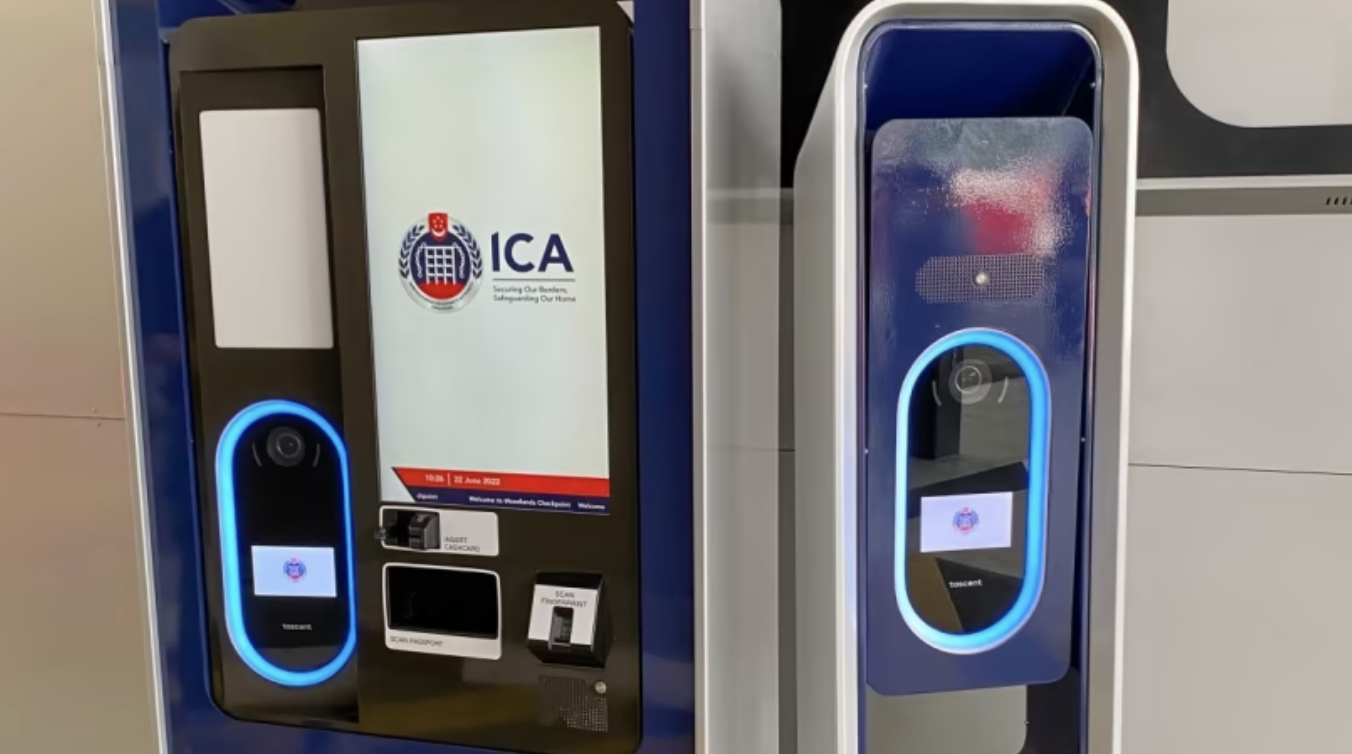
One of these initiatives is a QR code system allowing travellers to cross the Causeway checkpoints at Tuas and Woodlands without needing a physical passport starting in 2024.
While these new initiatives aim to enhance travellers’ experience, ICA has stated that in-car clearance systems will only be fully automated in the second half of 2024.

Instead, officers will still be stationed at manual counters in the first phase of 2024.
Automated In-Car Clearance System
The idea of automated in-car clearance systems was considered after successful trials of the first ACIS prototype in 2017 proved that self-clearance of travellers in vehicles was possible.
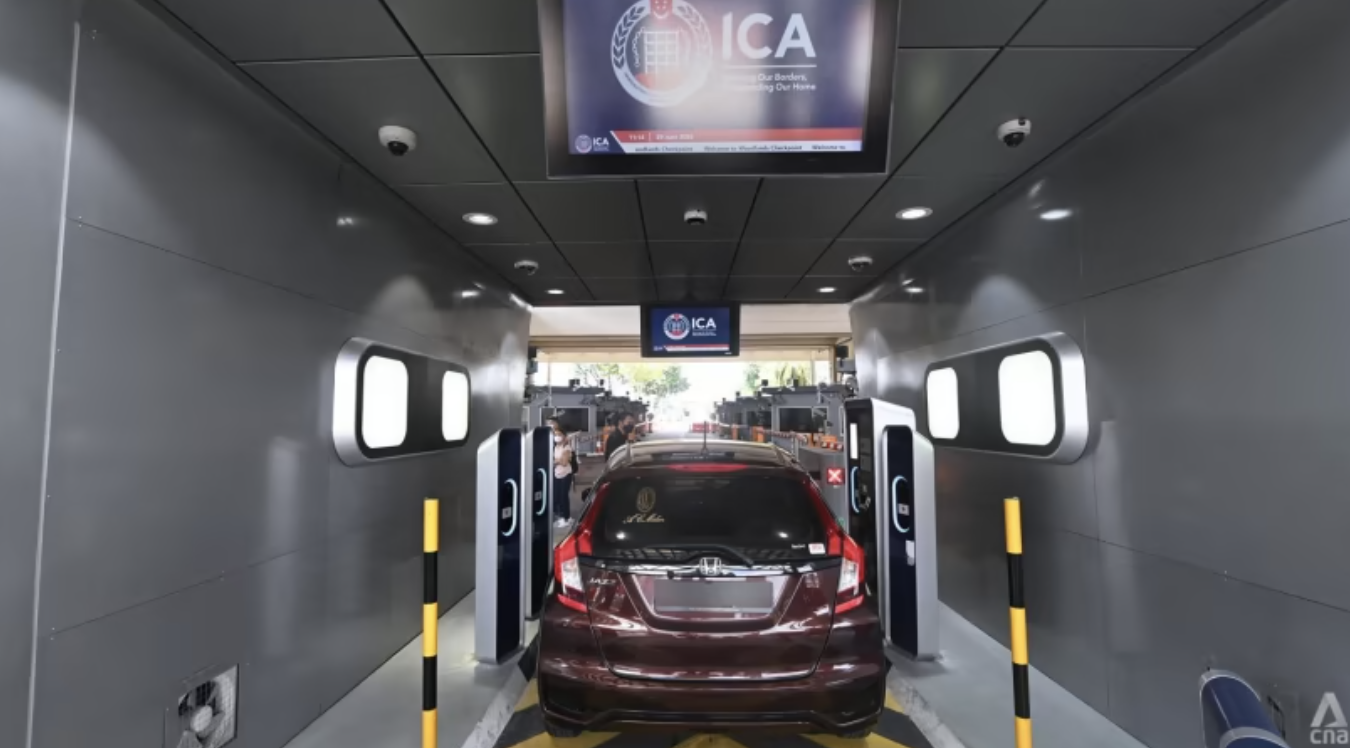
The initial model of the ACIS featured laser scanners that detected the location of car windows, followed by robotic arms that extended a cradle carrying wireless biometric devices towards the travellers.
As the vehicle moved into the clearance zone, cameras would automatically capture the vehicle’s license plate number.
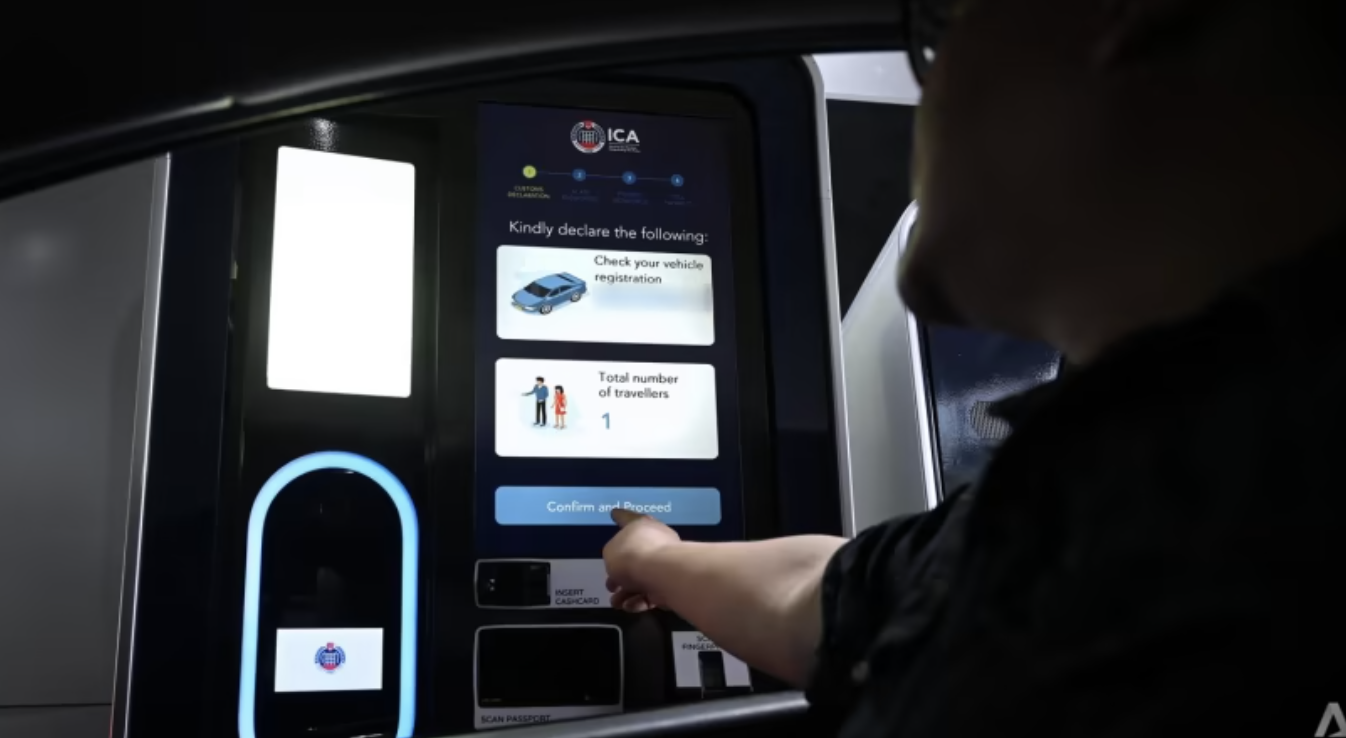
Following the vehicle’s entry into the APICS canopy, passengers can access a self-service kiosk with an LCD touch display, passport scanner, contactless facial and iris biometric scanners, and an intercom.
The initial prototype relied on fingerprint scanners, but the updated version utilises contactless facial and iris biometric scanners.
These enhancements enable travellers to remain inside their vehicles, eliminating the need to lean out of the window.
New and Improved System
Despite this, the prototype trialled in 2022 still necessitated the drivers to scan the passengers’ passports at the self-help kiosk.
The new ACIS systems, set to launch in 2024, have undergone further improvements.
Travellers can create a profile on the MyICA mobile app using their Singpass or passport details and generate an individual or group QR code.
This eliminates the need for physical passports and allows travellers to check in without them.
At the checkpoint, travellers can scan their QR code themselves at the counter, and immigration officers will conduct “facial image checks” of the passengers in the car using data retrieved through the QR code.
In addition, travellers can save these profiles and use them for future trips, reducing the time needed to complete immigration processes and group clearances at the checkpoint.
The ICA expects that with the dedicated APICS lanes to be rolled out at Tuas and Woodlands checkpoints after the first phase of 2024, travellers will soon be able to check in without assistance from officers.
This will reduce the need for manpower to facilitate the immigration processes and allow for more lanes to be opened for more travellers.
Public Response to New System
During the 2022 trials at Woodlands Checkpoint, approximately 94% of travellers cleared immigration through APICS without officer assistance.
According to the ICA, most travellers found the process faster and more intuitive than manual clearance.
Nonetheless, the agency plans to collaborate with HTX to further enhance the concept of operations for APICS before its implementation at all land checkpoints.
Based on the success of the ACIS system, ICA also revealed its plan to gradually replace manual counters at all checkpoint passenger halls starting in the first quarter of 2024.
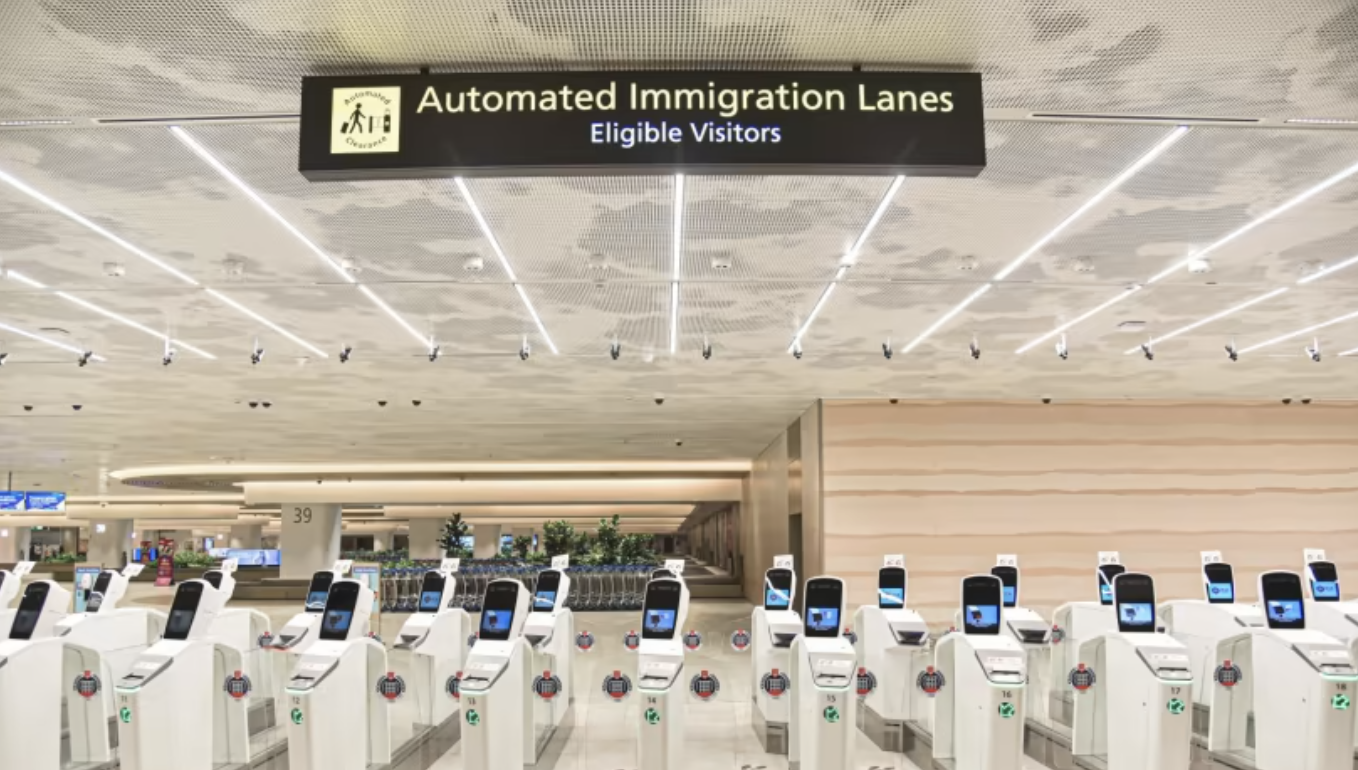
To cope with the increasing number of travellers and limited manpower, the ICA plans to equip all checkpoints with approximately 800 new automated lanes under the Automated Border Control System (ABCS).
This is part of their Automated Clearance Initiative (ACI) introduced in May 2022, which allowed visitors from 51 jurisdictions to use selected automated lanes for immigration clearance without prior enrolment.
However, these passengers still needed to present their passports.
ICA’s Deputy Commissioner for Policy and Transformation, Ms Cora Chen, has stated that automated immigration processes will soon become the norm.
The next generation of ABCS lanes will allow Singaporeans arriving and departing the country and departing visitors to enjoy contactless clearance without presenting their passports.
She emphasised that the measures aimed to provide travellers with an even smoother and faster clearance experience amidst the increasing number of travellers and limited manpower resources.
Usage of Technology to Upgrade Systems
In 2022, ICA took over the protective security duties that the police used to perform at land checkpoints, resulting in an increase in its workload.
Instead of the police, the ICA are now the first point of contact for security-related incidents occurring at Singapore’s land checkpoints.
As a result, the agency plans to open a new integrated ICA Services Centre in 2024, adjacent to its existing ICA Building in Lavender.
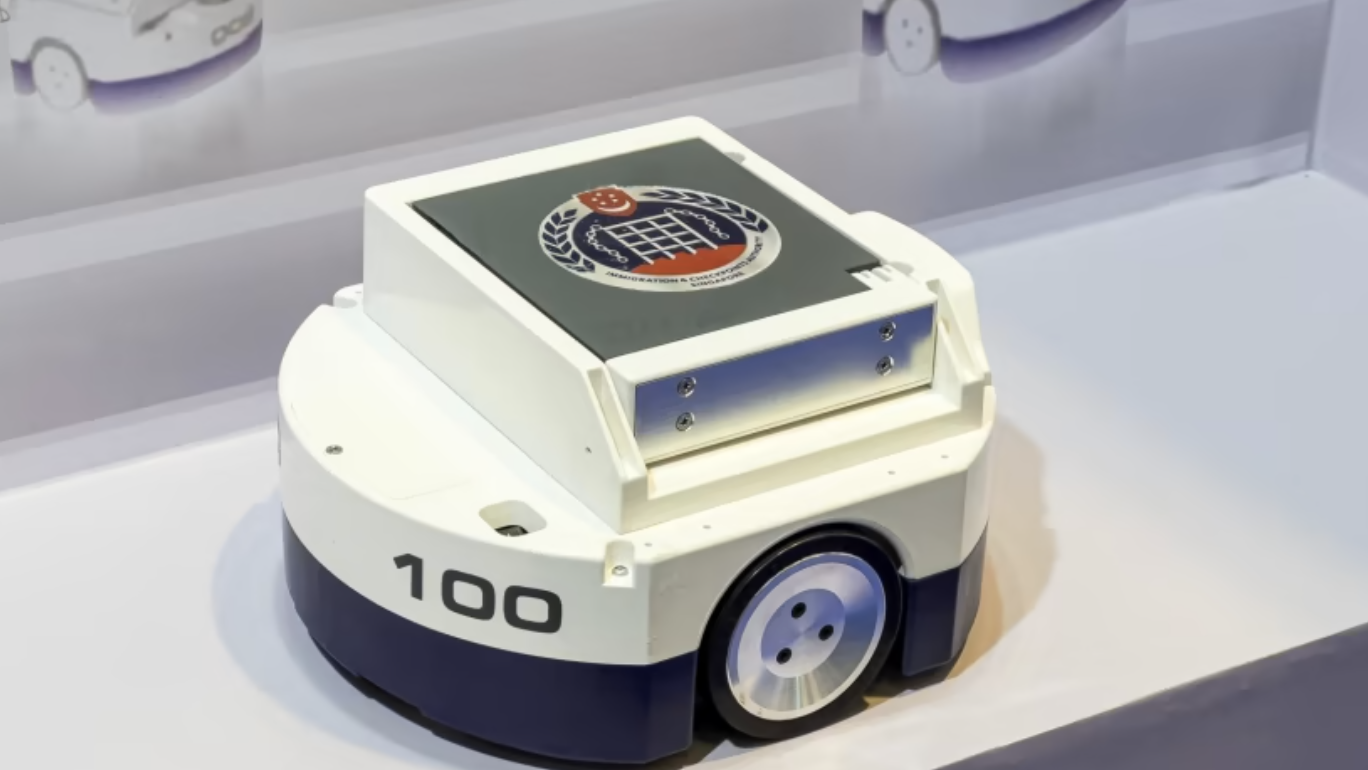
The new building will provide a seamless one-stop service and features an Integrated Smart Document Management System (iSMART) to enable customers to collect their documents, such as identity cards and passports, on their own.
ICA is also working to transform its cargo clearance process through greater automation and paperless clearance with the New Clearance Concept for Cargo (NCC Cargo).
The agency is currently trialling data analytics and artificial intelligence (AI) in detecting anomalies in scanned images of cargo, parcels, and baggage to strengthen its ability to identify potential threats.
ICA has been expanding its use of technology to automate more of its systems and free up its officers for higher-value roles, such as real-time ground observations and identifying suspicious travellers for interviews and checks.
By automating more processes, the agency hopes to increase the efficiency of its investigation officers.




